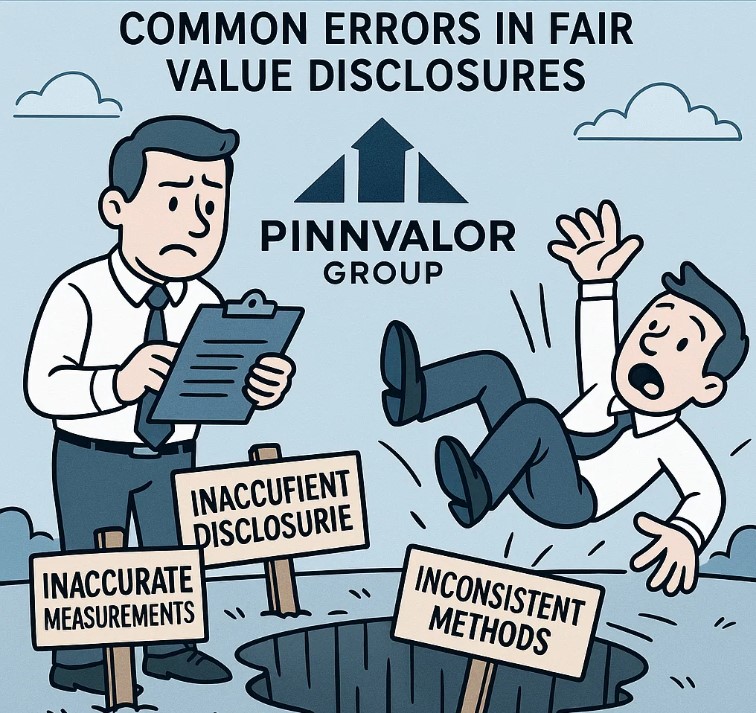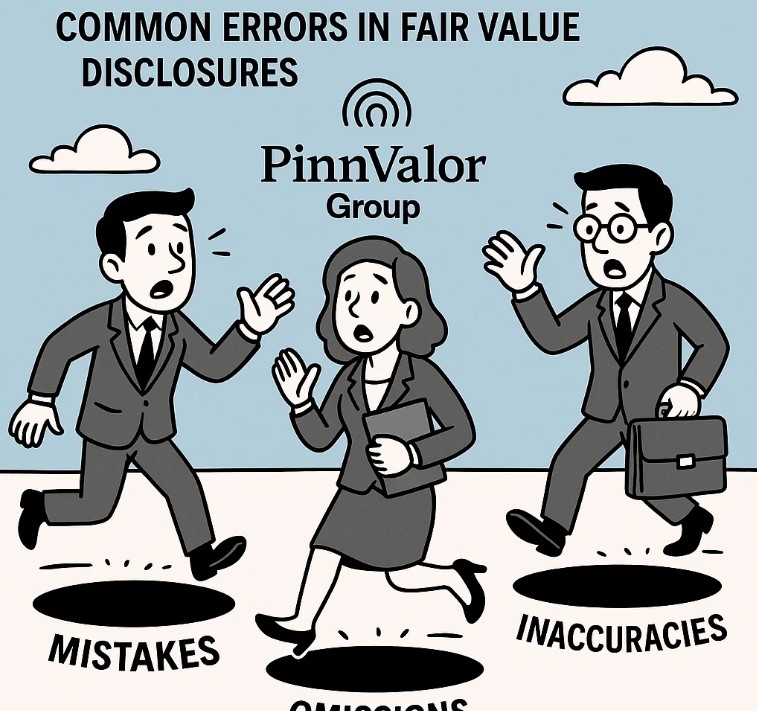
Avoiding Pitfalls: Common Errors in Fair Value Disclosures
Fair value measurement has become a cornerstone of transparent financial reporting under accounting standards such as IFRS 13 and ASC 820. While the concept seems straightforward — estimating the price that would be received to sell an asset or paid to transfer a liability in an orderly transaction — the disclosure process often trips up even seasoned professionals.
This article examines common errors in fair value disclosures, why they occur, and how to avoid them to ensure compliance, clarity, and credibility.
Do your fair value disclosures truly reflect accurate and transparent valuations?
Misclassifications and vague disclosures cloud the true value of your assets. Precision and transparency in fair value notes pave the way for credibility.
1. Misclassification in Fair Value Hierarchy
The Problem:
One of the most frequent issues is incorrectly categorizing assets and liabilities into Level 1, Level 2, or Level 3 in the fair value hierarchy.
- Example: Listing an actively traded stock (which should be Level 1) under Level 2 because of internal valuation adjustments.
Why It Matters:
Misclassification can mislead stakeholders about the certainty and reliability of valuations.
Solution:
- Clearly identify whether inputs are observable or unobservable.
- Follow guidance strictly — Level 1 requires quoted prices in active markets.
- Document your basis for classification.
2. Incomplete Disclosure of Valuation Techniques
The Problem:
Companies sometimes fail to disclose which valuation methods were used (e.g., market approach, income approach, cost approach) or provide vague descriptions.
Why It Matters:
Without clear disclosure, users of financial statements cannot assess how reliable or relevant the valuation is.
Solution:
- Specify the valuation approach for each class of asset/liability.
- Explain why that method was chosen.
- Include changes from prior periods and their reasons.
3. Omitting Key Assumptions and Inputs
The Problem:
Especially for Level 3 measurements, entities often neglect to disclose significant unobservable inputs (e.g., discount rates, growth rates, volatility estimates).
Why It Matters:
Investors and analysts rely on these inputs to evaluate sensitivity and potential valuation risk.
Solution:
- Provide quantitative details of key assumptions.
- Discuss how changes in assumptions might affect fair value.
- Include sensitivity analyses where required.

4. Ignoring Transfers Between Levels
The Problem:
Fair value measurements can shift between levels due to market activity changes — yet many entities fail to disclose these transfers and their reasons.
Why It Matters:
Not reporting transfers reduces transparency and may raise compliance concerns.
Solution:
- Track changes in inputs regularly.
- Disclose the amounts and reasons for transfers, both into and out of levels.
5. Inconsistent Presentation and Terminology
The Problem:
Terminology inconsistencies (e.g., using “net realizable value” interchangeably with “fair value”) or inconsistent formatting across reporting periods confuse readers.
Why It Matters:
Such inconsistencies can signal weak controls or a misunderstanding of concepts.
Solution:
- Use terminology exactly as defined in accounting standards.
- Maintain consistency in headings, tables, and note structures.
6. Lack of Cross-Referencing and Integration
The Problem:
Disclosures about fair value are often isolated from related notes (like financial instrument risks or impairment testing).
Why It Matters:
Users miss the bigger picture if they cannot connect fair value data to related risks or asset performance.
Solution:
- Cross-reference fair value notes to relevant risk management, asset impairment, and segment reporting disclosures.
Best Practices for Accurate Fair Value Disclosures
- Align with the latest IFRS or US GAAP guidance.
- Engage valuation experts for complex Level 3 measurements.
- Maintain audit trails for assumptions and classification decisions.
- Perform regular internal reviews before publishing.
Final Thoughts
Fair value disclosures are not just a compliance checkbox — they are a communication tool between the company and its stakeholders. Avoiding these common pitfalls ensures not only regulatory compliance but also builds investor confidence and demonstrates professional integrity in financial reporting.
